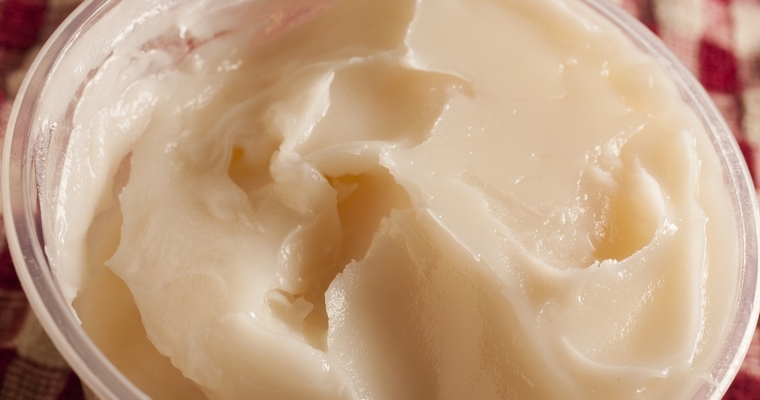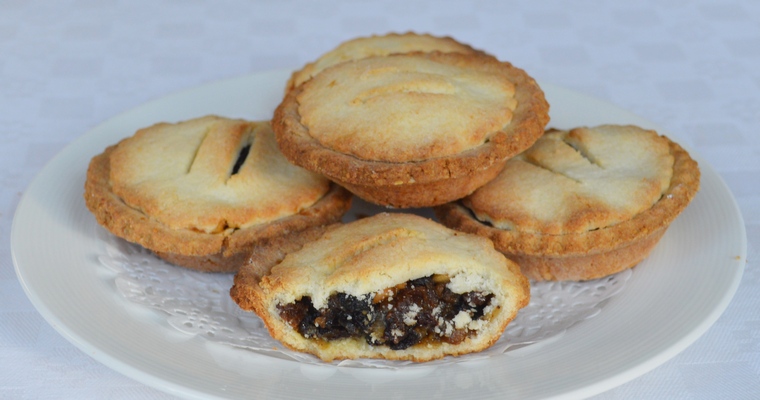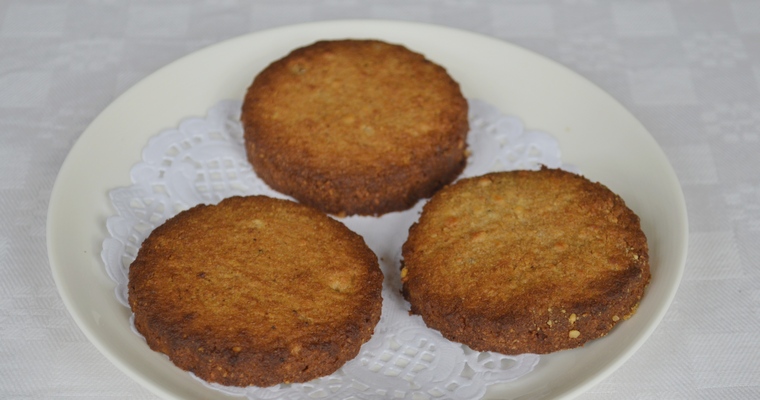Guide to replacing butter with lard for delicious dairy-free cakes, biscuits and pastry. Includes a conversion table, and instructions for adapting recipes.
Technique
01. What is the role of butter in a baking recipe?
02. Why are solid fats preferred for baking?
03. What different types of fat can be used for baking?
04. Why replace butter?
05. Why use lard for baking?
06. Why did lard fall out of favour?
07. How will lard affect the flavour?
08. How will lard affect the structure and texture?
09. What happens if I replace butter one-for-one with lard?
10. How do I convert an amount of butter to lard?
11. What adjustments will I need to make to the recipe?
Recipes
12. Which recipes work best with lard?
01. What is the role of butter in a baking recipe?
Butter acts as a lubricant in baking recipes, melting when heated. This weakens the structure of bakes by preventing the sticky, structural elements like gluten and egg proteins from bonding together. In cakes, this results in a soft crumb that crumbles when sliced. In pastry, this results in a flaky crust that falls apart. This lubricating effect also enhances the eating experience, creating a sensation of moistness in the mouth.
Properties of butter:
- Hydration: butter comprises 20% water and 80% fat. Unlike water, fat does not evaporate or become absorbed during heating. Instead, fat melts into the batter to lubricate the flour. This creates a moist bake.
- Texture: butter helps bakes to rise by trapping air, and by releasing steam as the water content evaporates. This creates a light and fluffy texture. Butter can be creamed with granulated sugar to create tiny pockets of air in the batter during the mixing stage (mechanical aeration). During the heating stage it melts, creating a channel for the bubbles of carbon dioxide that are produced by raising agents like baking soda (chemical aeration).
- Structure: butter reduces gluten formation and egg protein coagulation (it coats flour particles in an oily film, and it competes with eggs proteins to bond to other egg proteins). This weakens the structure, creating a tender crumb that is crumbly without being dry.
- Flavour: butter has a pleasant flavour and a rich mouthfeel. It has a low melting point, which means that it melts in the mouth. This creates a bake that feels moist without being greasy.
- Crust: butter promotes the formation of a flavoursome brown crust, as milk solids contain sugar and protein. When heated, sugars and proteins undergo chemical reactions that create deeper flavours and colours (caramelisation and the Maillard reaction). Browning can only happen once all the water has been driven out and the surface temperate can exceed 100°C/210°F. Fat helps to raise the temperature by acting as a heat transfer agent.
02. Why are solid fats preferred for baking?
Fats are classified according to whether they are solid at room temperature or liquid. Liquid fats are less versatile to bake with because they have a weakening effect on the structure. Oils cannot be creamed with sugar to create aerated batters, nor can they be rubbed into flour to create flaky pastry dough. Instead, they must be stirred directly into the dry ingredients. This results in a dense structure and moist texture. If the oil is not thoroughly incorporated during the mixing stage, then the finished bake can be unpleasantly greasy. Egg yolks, honey and xanthum gum are all emulsifiers that help to suspend the oil particles in the batter to prevent greasiness.
(butter, coconut oil, lard, suet)
- solid at room temperature
- range from white to pale yellow in colour
- neutral flavours
- higher melting points
- stable when heated
- best stored in the fridge
- light, delicate sponge cakes
- cake frosting / fillings
- pie crusts
- pastry
- steamed puddings
Good for light and fluffy cakes like a Victoria sponge, as solid fats can be creamed with granulated sugar to trap air. Butter is also creamed with powdered sugar to create a thick paste that can be sandwiched in the middle of cakes and muffins (buttercream).
Lard and butter may be rubbed into flour to make biscuits, pie crusts and pastry. The rubbing actions coats the flour particles in an oily film, creating a crumbly texture that falls apart.
Suet has a particularly high melting point, which adds lightness to steamed puddings. By the time it melts, the batter has had time to set around the suet lumps, leaving behind a regular network of air bubbles.
Biscuits made with butter and coconut oil tend be thin and crisp, as these fats have lower melting points. This causes doughs to spread more in the oven before they set.
(olive oil, nut oils, seed oils, vegetable oils)
- liquid at room temperature
- range from light gold to amber to pale green in colour
- distinctive flavours
- lower melting points
- prone to becoming oxidised or rancid when heated
- best stored in a cool, dark cupboard
- moist, dense cakes
- strongly flavoured bakes
- soft, chewy cookies
Good for bakes which require moistness, like banana bread. Also good for bakes with strong flavours like gingerbread cake. The distinctive flavours of plant-based oils need to be balanced with other strong flavours to avoid overwhelming.
Liquid fats cannot be creamed with sugar. Instead, batters are prepared using the all-in-one method, where all the ingredients are mixed together at the same time. Bakes will have a flatter, denser structure, and require a chemical raising agent like baking soda.
Biscuits hold their original shape and do not spread much in the oven, since the fat was already a liquid when the raw dough was formed.
03. What different types of fat can be used for baking?
Whether a fat is a solid or a liquid is determined by its chemical structure. Fats are made up of long chains of carbon atoms, linked together by single bonds (C-C) or double bonds (C=C). Double bonds can split apart and react with hydrogen, so that one bond continues to link across to the next carbon atom in the chain, while the other bond links up to an isolated hydrogen atom. In saturated chains, every double bond in the chain has split apart and bonded to a hydrogen atom. When a chain holds as many hydrogen atoms as possible, it is described as ‘saturated’. This creates a stronger, denser structure, as double bonds introduce a kink to the chain, forcing the carbon atoms further apart. Fats chains that only have one double bond are described as ‘monounsaturated’ (mono- meaning one), while fat chains that have more than one double bond are described as ‘polyunsaturated’ (poly- meaning many). The more double bonds there are, the less stable the fat. Fats that are high in polyunsaturated fat should never be heated, as they are highly reactive. When heated, they form toxic, cancer-causing chemical compounds.
04. Why replace butter?
Cow’s milk is a sweet-tasting liquid that is churned and fermented to produce butter, cheese and yoghurt. The sweetness comes from a sugar called lactose. Lactose is a disaccharide, which means that it is formed from two carbohydrates bonded together (di- meaning two, and -saccharide meaning sugar). This complex molecular structure makes it difficult to digest. Over time, a diet that is high in complex carbohydrates can place an intolerable strain on the small intestine, leading to painful bloating, cramping and diarrhoea. Some people cannot digest milk at all because they do not have the necessary digestive enzymes. This is what is meant by lactose intolerance. Nearly 70% of the world’s population lacks lactase, the enzyme that breaks down milk. It is an evolutionary quirk that the peoples of northern Europe predominantly maintain lactase production into adulthood, while most other ethnic groups cease production after weaning.
05. Why use lard for baking?
Before the 1900’s, lard was the most popular fat for baking in many parts of Europe. Many of the recipes that we bake today would originally have been made with lard. Rendered animal fat was readily available as a by-product of coking. This was particularly relevant in cooler, upland areas where butter was either unaffordable or unavailable. (Upland cattle were bred predominantly for meat, and produced much less milk for churning into butter.) Lard is simple to make in a domestic kitchen. Lumps of pig fat are placed in a pan, gently heated until they melt down to a clear liquid, and then strained to remove any non-fat elements like membranes and connective tissue. This pure fat is then left to cool and solidify into a white mass. You can buy lard from the supermarket, where it is packaged into butter-sized blocks and found in the refrigerator section. However, commercially-produced lard is chemically treated to extend the shelf life and ensure that it remains solid at room temperature. Superior lard can be purchased from a good butcher, although you may need to ask for it, as they do not always put it out on display.
06. Why did lard fall out of favour?
Few people in modern Britain view lard as an everyday staple. From the 1900’s, aggressively-marketed vegetable oils began to supplant lard. The popularity of vegetables oils soared once a new chemical process was developed that could transform oils into hard fats by heating to high temperatures and bombarding with hydrogen atoms. This process chemically saturated the fat chains with hydrogen (‘hydrogenation’). The degree of hydrogenation could be varied to create different consistencies, from spreadable margarine to solid vegetable shortening. Hydrogenated vegetable oils were cheaper, kept for longer and were billed as healthier alternative to butter and lard. The decline of lard was accelerated in the 1950’s when saturated fat was linked to heart disease – erroneously, as it turned out. In fact, we now know that hydrogenation produces toxic chemical compounds called trans fats, which are the real culprits. Meanwhile, many of us grew up spurning golden butter in favour of greasy margarine, and sorrowfully divesting bacon of its flavoursome rind.
07. How will lard affect the flavour?
Lard used by itself in baking recipes tends to produce rather tasteless results. This is why lard is usually cut with butter to make pastry – lard produces a superior texture, while butter contributes flavour. (In order to enrich lard-only pastry, you can mix an egg yolk into the dough to impart a subtle ‘eggy’ flavour and a golden colour.) Stronger flavours are required to balance the blandness of lard – at the very least, a pinch of salt should be added to replace the salt contained in butter. You can augment the flavour of lard-only bakes by replacing a small amount of the base flour with a stronger-tasting flour like buckwheat, chestnut, coconut, oat or corn meal, or by seasoning the batter with aromatic spices, essences, chocolate, dried fruit or nuts. Lard has a higher melting point than butter, which means that it does not melt in the mouth to lubricate the tongue. This can result in an unpleasant mouthfeel, as the fat lingers in the mouth and leaves behind a waxy coating.
08. How will lard affect the structure and texture?
The higher melting point of lard means that biscuits hold their shape and height better, as the egg proteins have time to set before the fat melts and spreads in the oven. Biscuits made with lard will also be flakier, as lard inhibits the formation of a sticky protein called gluten. This is the reason why lard is the fat par excellence for achieving flaky pastry. To make pastry, a solid fat like butter or lard is rubbed into flour until it resembles breadcrumbs. This action coats the flour particles in an oily film, which stops them from binding together. Water is then mixed in to create a stiff but pliable dough. Wheat flour produces gluten when it is mixed with water. Unlike butter, which is 20% water, lard is 100% fat, which means that less water is available for the development of gluten. This produces a crumblier style of pastry called ‘shortcrust’, which describes the length of the gluten strands that are formed. In cakes, this results in a softer crumb, as gluten has a toughening effect.
09. What happens if I replace butter one-for-one with lard?
Lard offers an almost direct substitute to butter, but you cannot replace 225g of butter with 225g of lard in a recipe and achieve completely comparable results. Cakes made with lard will have a slightly better rise, the texture will be slightly drier and crumblier, and there will be a noticeable reduction in the quality of the flavour and mouthfeel.
10. How do I convert an amount of butter to lard?
You do not need to use as much lard to get the same fat content as butter, since butter comprises 20% water. If you are measuring by weight (grams), simply reduce the amount of lard by 20%. However, if you are measuring by volume (cups), you need to reduce the amount of lard by 25%. This is because the water content in butter makes it denser than lard. Water molecules have positive and negative ends that are attracted to one another, and therefore pack closer together than fat molecules. This means that 1 cup of butter weighs slightly more than 1 cup of lard (225g versus 210g).
Weight (UK grams)
| Butter | Lard |
|---|---|
| 50g | 40g |
| 75g | 60g |
| 100g | 80g |
| 125g | 100g |
| 150g | 120g |
| 175g | 140g |
| 200g | 160g |
| 225g | 180g |
Volume (US cups)
| Butter | Lard |
|---|---|
| 1/8 cup | 1/8 cup |
| 2/8 cup | 2/8 cup (scant) |
| 3/8 cup | 2/8 cup (heaped) |
| 4/8 cup | 3/8 cup |
| 5/8 cup | 4/8 cup |
| 6/8 cup | 5/8 cup |
| 7/8 cup | 6/8 cup (scant) |
| 1 cup | 6/8 cup |
11. What adjustments will I need to make to the recipe?
If you substitute butter with lard in an established recipe, you need to compensate for the loss of flavour, and mask the slightly savoury taste that lard can introduce. Although lard is bland, it carries flavours well because flavour compounds dissolve into hot fat (they are not soluble in water). For cakes and cookies, a small amount of vanilla extract or sweet-tasting cinnamon masks the flavour of lard. Savoury pie crusts can be enriched with an egg yolk, and then seasoned with complementary herbs and spices like thyme or mustard. For bakes which straddle the sweet-savoury boundary, like hard biscuits and tart cases, I recommend enhancing with an egg yolk, 1 teaspoon of honey, ¼ teaspoon of ground ginger, and ½ teaspoon of salt. You can mimic the golden hue of butter-based bakes by brushing the top of biscuit and pastry dough with an egg yolk wash. This covers the surface area with proteins, resulting in the formation of a glossy, golden-brown crust.
- add 2 tablespoons of liquid for each cup (210g) of lard to allow biscuit doughs to spread in the oven
if measuring by volume (cups):
- lard -25%
if measuring by weight (grams):
- lard -20%
- add ¼ teaspoon of salt for each cup (210g) of lard
- use strong flavours to compensate for the bland taste of lard
- salt + 1/4 teaspoon
if the bake is sweet, consider adding ONE of these:
- almond extract +½ teaspoon/li>
- vanilla extract +½ teaspoon/li>
- ground ginger + ¼teaspoon/li>
- ground cinnamon +¼ teaspoon
the bake is savoury, consider adding ONE (or a subtle combination) of these:
- egg yolk + 1
- honey +1 teaspoon
- thyme +1 tablespoon fresh / +1 teaspoon dried
- mustard powder +1 tablespoon
- ground black pepper +½ teaspoon
- add honey (an acid) or baking soda (an alkali) to change the pH environment and promote browning
- brush the surface area with an egg wash to promote browning
- use dark-coloured baking tins
- position on the highest shelf in the oven, and place a tray on the shelf below to deflect the heat and stop the bottom from over-browning
- honey +2 teaspoons
- baking soda +½ teaspoon
- egg wash (1 egg yolk + 1 tablespoon water)
12. Which recipes work best with lard?
Some recipes are better suited to lard than others. You need to be realistic about changes to the flavour when baking with lard. Buttery shortbread biscuits, for example, would be altered beyond recognition, even if the texture was familiar. Similarly, buttercream has a very unpleasant and waxy mouthfeel when made with lard (better to use coconut oil, with its lower melting point and naturally sweet flavour). As a general rule of thumb, avoid converting recipes that contain a high ratio of butter, and no other ingredients that impart flavour such as aromatic spices, essences, chocolate, dried fruit or nuts. This indicates that the main role of fat in the recipe is for flavour rather than texture. It is more rewarding to stick to recipes that are strongly flavoured, like chocolate brownies, ginger biscuits, or fruit cake.
If all else fails, you can rescue a failed attempt at replacing butter with lard by brushing the top with a sweet glaze made by dissolving 2 parts sugar with 1 part water / fruit juice, plus optional flavourings like ground cinnamon or vanilla. Simply heat the ingredients in a small saucepan for 5 minutes, stirring until the glaze thickens to a sticky but spreadable consistency. Wait for the cake to cool before spreading on top, or the glaze will thin out too much. Alternatively, you can saturate the entire cake with flavour by pricking the top all over with a skewer, and then pouring over the syrup while the cake is still hot. Leave the syrup to soak in while the cake cools in the tin.
Recipes that use lard:
Other Articles in the Series:










Hello I have a chocolate chip cookie recipe that calls for 1 and 1/3 cup butter and I’m guessing that’s about 21 tablespoons so if I want to replace that with lard would I just use maybe 11 tablespoons of lard or just use one and one third cup lard thank you
Hi Glen, you would need to reduce the amount of fat by 25%. So that would mean replacing the butter with 1 cup of lard (16 tablespoons), and adding 1/4 teaspoon of salt. I’d probably recommend replacing the butter with coconut oil rather than lard (again, 1 cup + 1/4 teaspoon of salt). This would give a better mouthfeel and flavour than lard. Coconut oil also has a similar melting point to butter, which means that the dough will spread a similar amount in the oven before setting (a lard-based cookie would be thicker). Coconut compliments chocolate nicely but, if you didn’t want a noticeable coconut flavour, then you could use a flavourless variety.
For more information on coconut oil, see my article Replacing Butter with Coconut Oil.
hi there ,
just wondering if you can convert butter>>>>to lard or margerine . i used margarin for a pie crust , ./….great!
thanx r g .
Hello, you can directly substitute butter for margarine. For example, if your recipe calls for 225g of butter, then you can replace it with 225g of margarine. However, the flavour, mouthfeel and texture will be slightly different. I’m not a massive fan of margarine, as it is a very synthetic product (if you read about the process used to make margarine, then you might feel the same).
Thanks you very much. This article informed me very well about the most relevant aspects of this kind of substitution. I really appreciate it.